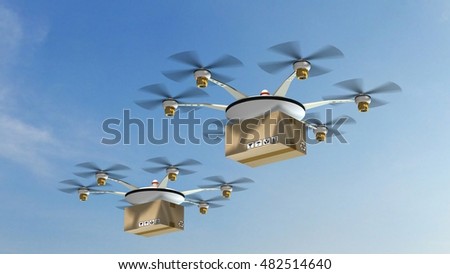Unexpected emergencies can happen at any time and leave communities scrambling to respond. Natural disasters, such as hurricanes and floods can cause physical damage and disrupt essential services. Acts of terrorism can create fear and chaos in a community. Emergencies can also be man-made, such as a chemical spill or a power outage.
In every case, it is essential for people to have access to accurate information and for emergency responders to communicate quickly and effectively. Technology can play a critical role in both of these areas.
In what ways does technology help during times of emergency? Below are some examples.
Mobile Emergency School Safety Alert System
When emergencies happen, people must have quick access to the authorities and alert them about what is happening. A mobile emergency safety alert system serves as the panic alarm system for schools to provide quick access to emergency alerts and provides updates directly to parents’ cell phones.
This technology is instrumental in emergencies that involve school-aged children, such as a lockdown or evacuation. With this system, parents can be confident that the system will quickly notify them if something happens to their child at school.
Community Emergency Notification
Emergency notifications are information issued by government agencies in a major emergency. These alerts are available on people’s cell phones, televisions, or radios.
Emergency notifications can provide critical information to the public, such as where to go for shelter during a tornado or what to do if there is a chemical spill. They can also help reduce the commotion and keep people informed about the status of an emergency.
This feature is crucial in emergencies that affect a large area or multiple jurisdictions. Emergency notifications help ensure that people are safe and informed by providing information to the public.
GPS Tracking
During an emergency, responders need to be able to locate each other quickly and easily. GPS tracking can help them do this by providing real-time information about the location of emergency vehicles and personnel. This technology is helpful in natural disasters when responders have spread out away from each other.
It also allows people to share their whereabouts for more accessible location and tracking. The good news is that almost every device now has GPS tracking capabilities, so anyone can use whatever device is available to them.
Social Media
Social media can be a powerful tool for communicating with the public during an emergency. Emergency responders can use social media to provide updates about the crisis and instructions for what people should do.
The public can also use social media to share information about the emergency and find out what is happening. It can help to keep people informed and organized during an emergency.
Presence on these platforms is essential for people, as almost everyone now relies on these channels for information.
Smart CCTVs

People can use CCTV cameras for various purposes, including tracking criminals and monitoring traffic. The police can also use them to help oversee the community in an emergency.
Smart CCTV cameras can send alerts to the local police departments when they detect something out of the ordinary. It could be a person acting suspiciously or a car parked in a strange place.
This technology can help emergency troops get a better idea of what is happening on the ground and make better decisions about how to respond.
Aid Distribution
When there is a natural disaster, it is often challenging to get aid to the people who need it. Technology can help with this problem by organizing and tracking aid distribution.
Response teams can use several technologies for this purpose. For example, drones can deliver supplies to hard-to-reach areas, and GPS tracking can help to ensure that supplies get delivered to the correct location.
This technology can help speed up the process of getting aid to people who need it. It also helps to ensure that supplies get distributed fairly and reach the people who need them the most.
Air Transport
When there is a large-scale emergency, it is often necessary to transport patients to far away hospitals. In this case, air transport is often the best option.
Modern technology has made it easier than ever to coordinate air transport. It can help save lives during a major emergency and ensure that patients receive the best possible care. In turn, it helps to reduce the overall impact of the crisis.
In today’s world, technology plays a vital role in emergency response. From GPS tracking to social media, responders have a range of technologies at their disposal. These technologies help to keep people safe and informed during an emergency. They also make it easier for responders to coordinate their efforts and get aid to those who need it. In short, technology is providing a critical boost to emergency response efforts and can be a lifesaver in times of need.
